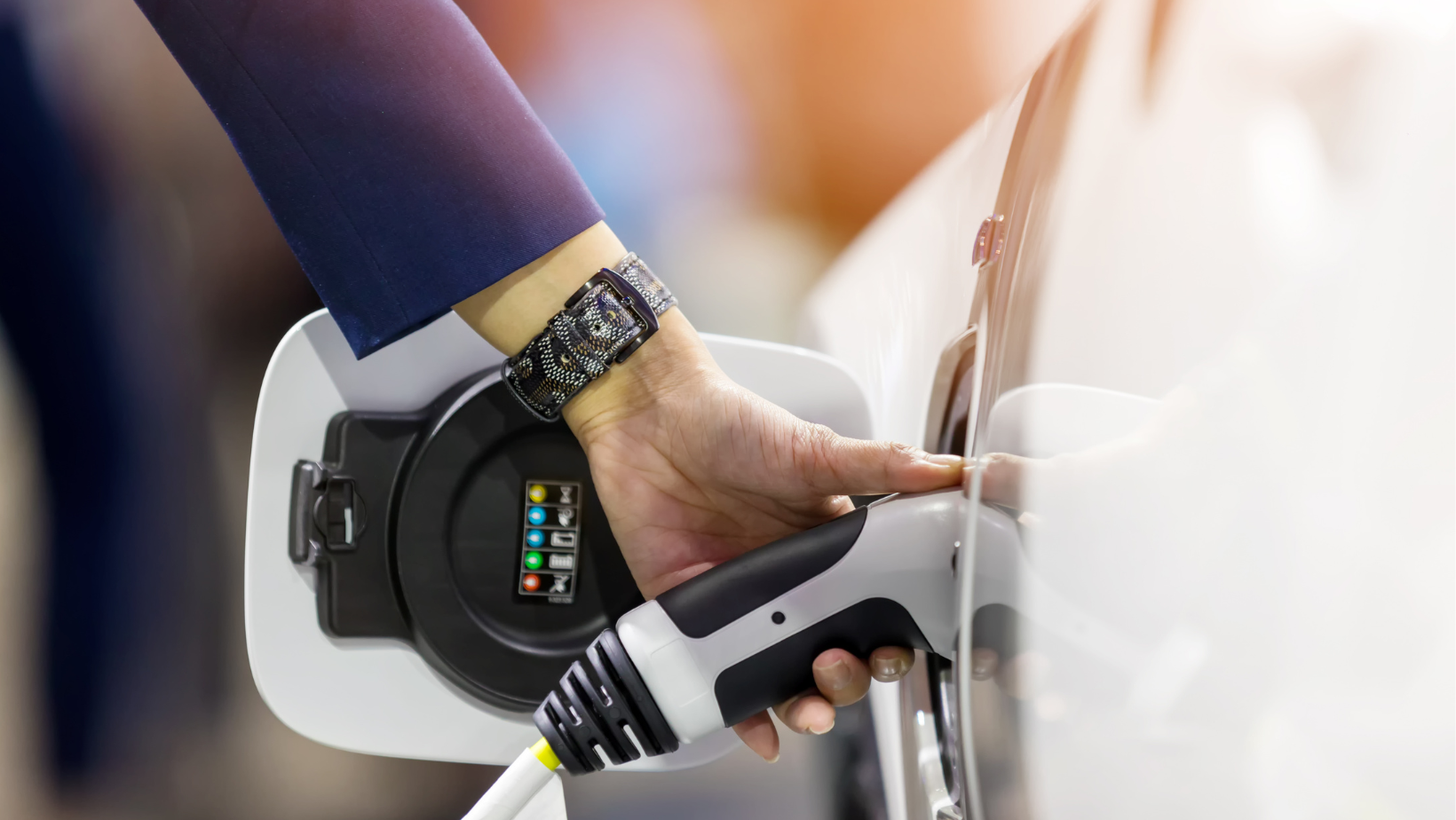Washington DC Personal EV Charging Stations
Washington DC residential EV charging stations. Personal EV charging stations are convenient, but what are the D.C. codes for legal installation? How to do it right, and when not to install.

Getting Started | Which Type of EV Charger Do You Need?
Do you plan to install a Level 1 or Level 2 charger? Higher charging levels increase the speed of the charging process as well as delivering more distance power. Each EV can accept different levels of power from the EVSE (Electric Vehicle Supply Equipment). EVs regulate the power delivered to them by the charger.
Level 1: These chargers typically generate an average of four miles of driving range per hour of charge. A common 120-volt household outlet is used for Level 1 charging, and as long as there is one available in your garage, you can just plug in without any further fuss. This is the slowest way to charge an EV, but the least expensive in terms of equipment and installation. If you don’t have a garage or exterior GFCI, you’ll need to have an electrician install one. An electrical permit and potentially a ‘heavy up’ may be required. Level 1 charging is appropriate for PHEVs (Plug-in Hybrid Electric Vehicles) which contain smaller batteries. Daily Level 1 charging for EVs may not be practical unless the vehicle is only being driven short distances each day.
Level 2: These chargers generate an average 32 miles of driving range per hour of charge. Appropriate for EVs/BEVs, (which contain much larger batteries than PHEVs). With up to 80 amps of power and a charging speed of 12 to 80 mph (up to 10x faster than Level 1 charging), Level 2 charging is the most common choice for daily EV charging. A Level 2 charger needs a dedicated 240-volt circuit like the one needed for an electric clothes dryer or kitchen range. There are several options for Level 2 chargers; You could deliver up to 80 amps of power by installing a 100-amp 208-240V dedicated circuit and a heavy supply line from the circuit breaker box. This will require electrical permits and probably a ‘heavy up’ from your power company. But is that really necessary? Most EV owners find a 40-amp charger delivering 9.6 kW quite sufficient. A third option is the 48-amp charger, which charges a bit faster at 11.5 kW, but requires beefed up wiring and your charger will need to comply with the NEC code. This significantly increases the cost for a 48-amp charger, and creates only a light benefit.
Level 3: Overkill. These chargers (DC Fast Charging or Supercharging), are primarily reserved for commercial and industrial use. Aside from the great expense of installing a Level 3 charging station, they require specialized and powerful equipment for operation.
Bullet Points
- Learn the types of available chargers
- DC parking type determines charging capabilities
- Running a cable from your home is subject to DDOT guidance and permit requirements
Adriana
Susan and Alex are amazing! After a bad experience with another agent left us in a very tough position, they turned everything around. They did a thorough evaluation of the property, offered expert advice and helped to prepare the condo for sale. They worked very hard, used local connections and communicated with us well. Despite the tough August market, we sold in less than 2 weeks.
What's Your DC Parking Type?
If you have a driveway that is not public space, or a garage or carport, you should be able install a Level 2 EV charger. But, it’s sometimes like installing a stack washer/dryer in a condo: seems simple–until it becomes complicated and expensive. Just because you have the space, doesn’t mean you have the other components near enough to comply with code and make it work.
Installation is easier and less expensive if you park near an existing power source. Chargers with approx. 25′ of cable can help, but further than that, you must connect to your electrical panel. Running electricity and adding a 220v outlet to an outbuilding or post/kiosk near a driveway could involve some fairly extensive work and expense.
Few Washington DC homes have dedicated garages or driveways, and many front yards in the District are considered public spaces (the area between the building or property line and the curb), so in addition to an electrical permit for install of your charger, any construction done on public space requires a separate public space permit issued by the District Department of Transportation.
Your Electrical System Capacity
Washington DC’s older row houses may need system upgrades to handle the load. Does your electrical panel have space for an additional breaker? If not, you’ll likely need a new panel, and a ‘heavy up‘ from the utility company before you can install your EV charging station.
Steps To Your Personal EV Charging Station Install
Start With DC's Postcard Permit Portal
What are Postcard Permits?
Online permits for small scale common construction projects—including EV chargers–that are limited to specified scopes of work determined by DOB:
- Post Card Electrical General Permit
- Post Card Electrical Heavy Up Permit
- Post Card Gas Fitting Permit
- Post Card Mechanical Permit
- Post Card Plumbing Permit
If you’re trying to get a building permits for one of the 50 most common home improvement and small construction projects you can now apply, pay for, and receive building permits from your home or office computer.
The EV Charger & DC Street Parking
If you park on the street in Washington DC, it is likely that you’ll have trouble installing a legal Level 2 EV charging station–and fines for infractions can be heavy.
You can petition your neighborhood’s ANC to support the proposition, then your contractor can apply for the installation of the charger, but DDOT wants you to know that any curbside charging station you finance would be a public good and not exclusively for your personal use.
If your home is located in an historic district, you’ll need to reach out to your Historic Preservation Board and ANC to determine if it is possible.
Homeowners should consult with their insurance providers to ensure that their owners / tenant liability coverage covers the addition, with a DDOT suggested limit of $1 million. Residents should inquire about adding or modifying the definition of “insured1 ” and “Electric vehicle charging system2 ” to their policy.
Alternatives
Alternatively, you can use a Level 1 charger connected to your home, run the cables perpendicular to streets, and cover the cord with a cable ramp. DDOT has noted that an increasing number of charging cords are crossing public right-of-ways, so they issued guidelines for this to prevemt hazards for other users of the public space.
Failure to comply with this guidance may result in the removal of unsafe equipment and the collection of expenses incurred to restore public space pursuant to DC Code § 10–1181.02 and 24 DCMR § 1304.2.
- Residents are not guaranteed a reserved
parking space and cannot use signage or
other means to reserve a parking space. - Use only Level 1 (110-120V) charging
equipment.No Level 2 (240V) charging
cords may cross thepublic right-of-way. - The EV charging cord shall cross
perpendicular to the sidewalk to minimize
obstacles to mobility. - When not charging an EV, all equipment
shall be removed from public space. - All local parking regulations, both
temporary and permanent, remain
unchanged and shall befollowed. - Residents are responsible for complying
with all relevant sections of the National
Electric Code3
- Residents must use an outlet associated
with their utility account. - All equipment must be listed and installed
per manufacturer’s instructions4 - All flexible cable used shall be suitable for
the conditions of use and location5 - Flexible cables shall be suitably rated for
equipment ampacity and power output6 - The rating of any cord and plug connected
utilization equipment not fastened in place
shall not exceed 80% of the branch circuit
ampere rating7 - Residents are responsible for following all
NFPA 70, National Electric Code
regulations. Contact a local electrician with
any questions.
The District's Curbside Charging Station Program
The EV Charging Station Program in Washington DC creates a public space permit available to EV charging station vendors to install a charger at eligible curbside spaces in the District. The stations are required to be dual-port and Level 2 or DC (direct current) Fast Chargers. Eligible curbside spaces include both residential blocks and business corridors to allow charging while at home and while engaging in commercial activities.
At this time, the permit is not available to individual applicants. Residents seeking to install a charger on or around their block are advised to work with their neighbors, their Advisory Neighborhood Commission, and a charging station vendor to identify a location best suited for a charger.

